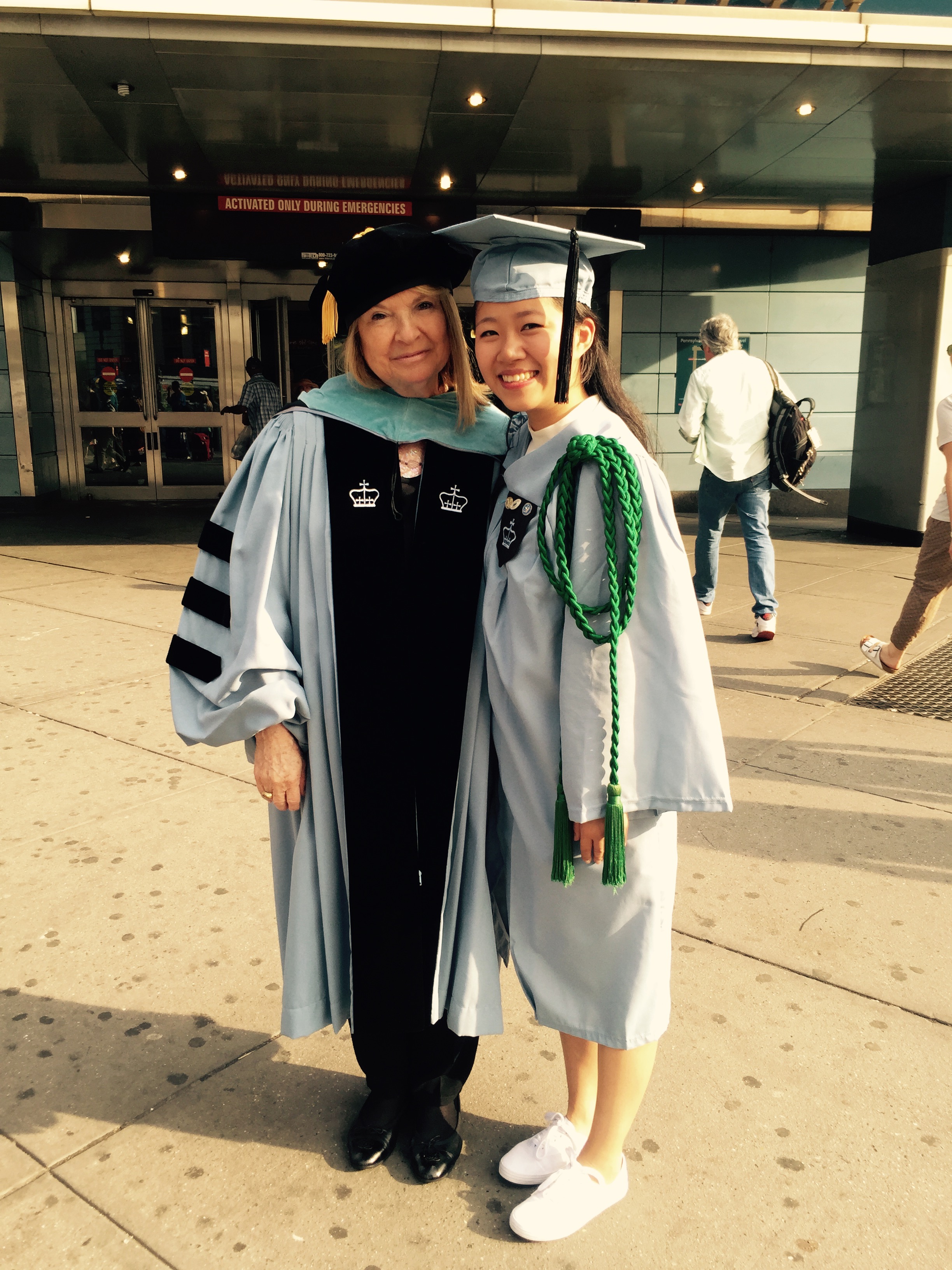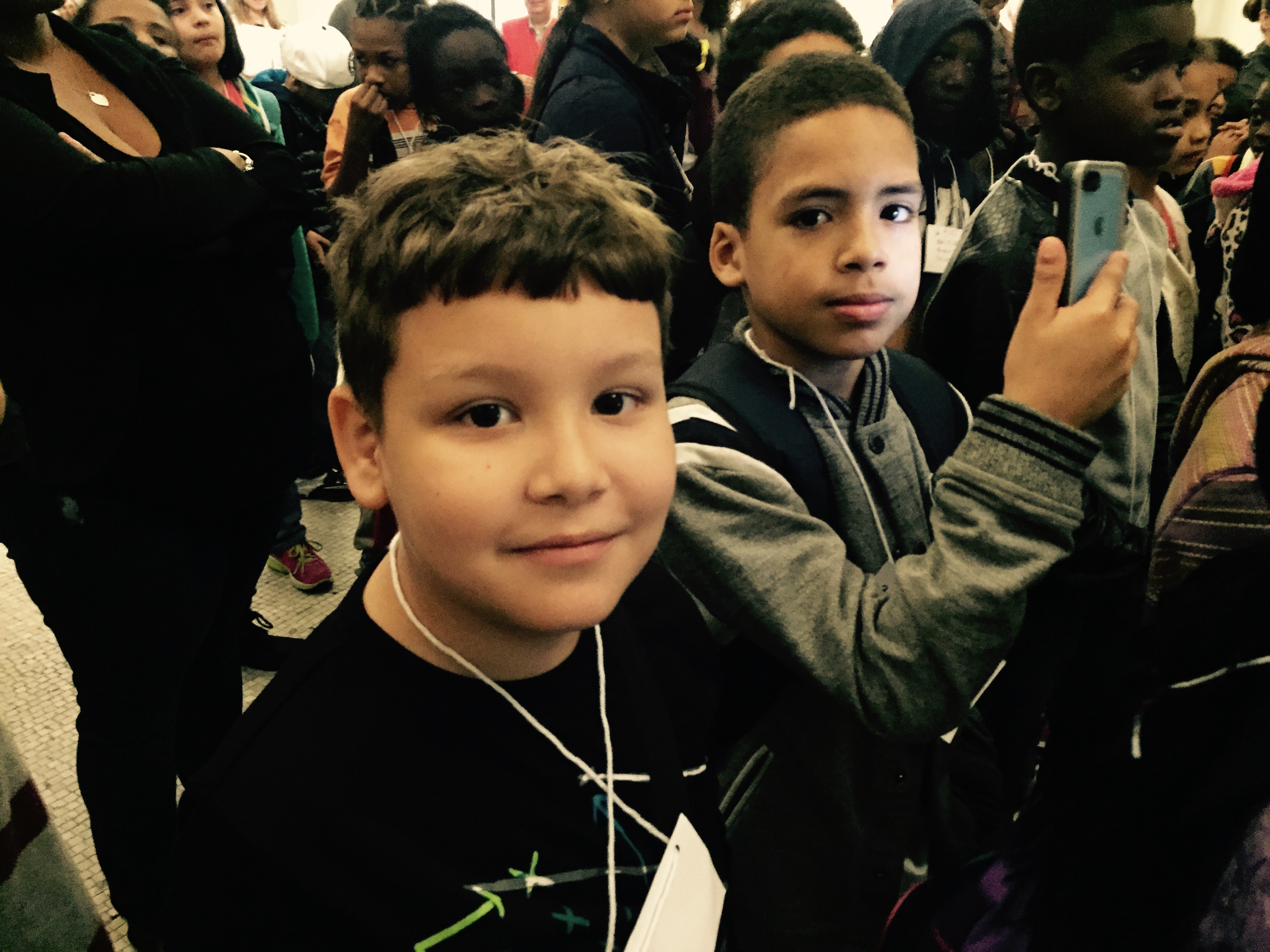May 2015 Archives
Three Queensborough students, Kyle Chin-How, Daysi Proano and Silvia Salamone have each been awarded a Jack Kent Cooke Foundation Undergraduate Transfer Scholarship of $40,000 per year to complete their baccalaureate degrees. They are three of 90 Scholars selected from 2,061 applications representing 540 community colleges from across the U.S.
Last year, Yueting Chen was the first ever Queensborough recipient of this transfer scholarship award. Currently she is conducting research in Genetics at Stony Brook University, taking full advantage of her scholarship and furthering her academic studies and professional ambitions. Yueting presented at Columbia University's CUSJ Undergraduate Research Conference on April 26, 2015.
The scholarship is for top community college students seeking to transfer to senior colleges so they can complete their bachelor's degrees. It is the largest private transfer scholarship and provides up to $40,000 per year to help cover a significant share of the student's educational expenses including tuition, living expenses and books for the final two to three years necessary to achieve a bachelor's degree.
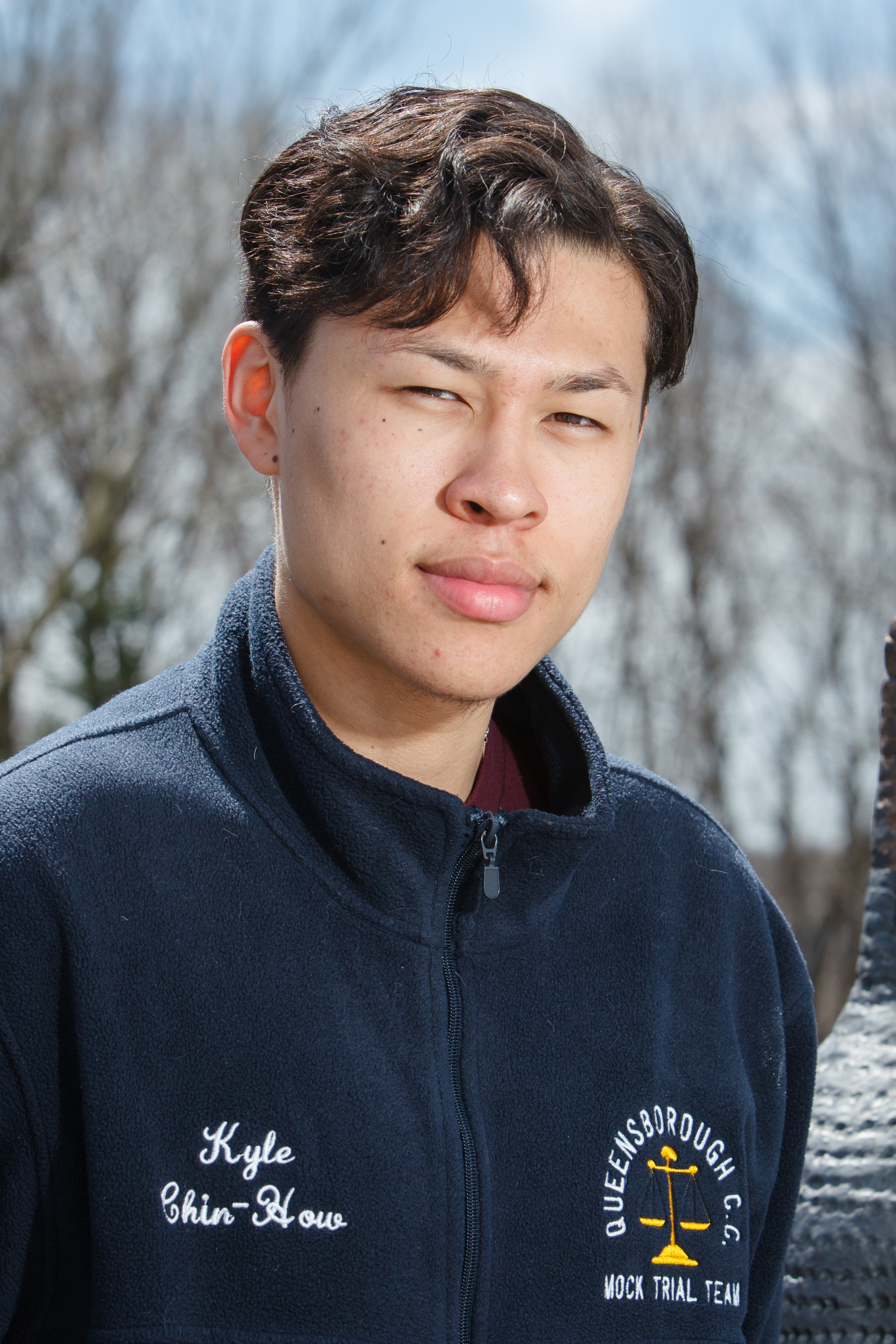 Honors student Kyle Chin-How will graduate this spring with an Associate degree in Liberal Arts and Sciences. He is a member of the Lambda Sigma Chapter of the Phi Theta Kappa International Honor Society and carries a 3.8 G.P.A. In addition to being an outstanding student, Kyle is a leader and mentor both on and off campus. He is a Model Senator in the NYS Session Senate Project, has held leadership positions in the College's Student Government Association and is an intern with the New York Public Interest Research Group (NYPIRG). At the college Kyle established "Talk Out Loud," a student public speaking group. He is also a mentor to students of Men Achieving and Leading in Excellence and Success (M.A.L.E.S.). Honors student Kyle Chin-How will graduate this spring with an Associate degree in Liberal Arts and Sciences. He is a member of the Lambda Sigma Chapter of the Phi Theta Kappa International Honor Society and carries a 3.8 G.P.A. In addition to being an outstanding student, Kyle is a leader and mentor both on and off campus. He is a Model Senator in the NYS Session Senate Project, has held leadership positions in the College's Student Government Association and is an intern with the New York Public Interest Research Group (NYPIRG). At the college Kyle established "Talk Out Loud," a student public speaking group. He is also a mentor to students of Men Achieving and Leading in Excellence and Success (M.A.L.E.S.).
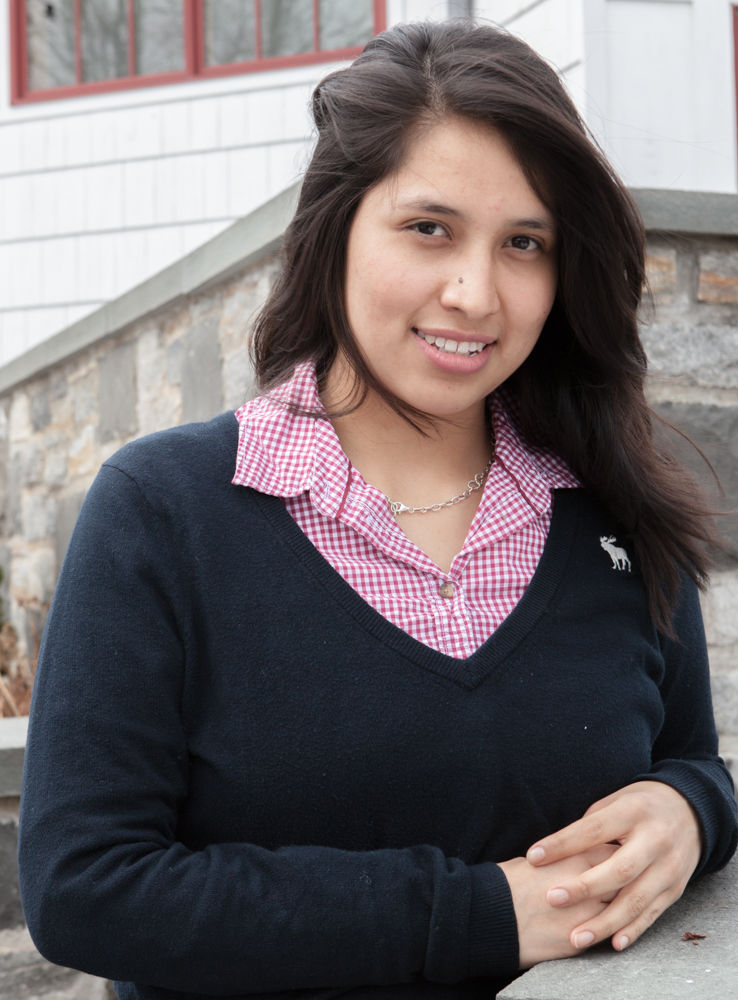
Daysi Proano, a Science for Forensics major, will graduate in May with an Associate degree in Liberal Arts and Sciences. She is planning to transfer to John Jay College where she is currently taking junior courses on permit with the intent to continue her studies in the same field.
Daysi, who has a 3.85 G.P.A. was named to the 2015 Phi Theta Kappa All New York Academic Team and is a Bronze Scholar on Coca-Cola's 2015 Community College Academic team. This past summer she was selected for a paid summer National Science Foundation Research Experiences for Undergraduates (NSF REU) internship in organic synthesis at Georgetown University. This year she was awarded a similar internship in Molecular Biophysics at Princeton University. She has already completed more than 25 honors credits in Chemistry, Biology and Calculus and has presented her Honors contract and class work during the last two Honors Conferences. In addition she has conducted research under Dr. Paris Svoronos of the Chemistry Department, and has presented her findings at professional Chemistry and Biology conferences including Columbia's Undergraduate Research Symposium and Yale's MARM Meeting.
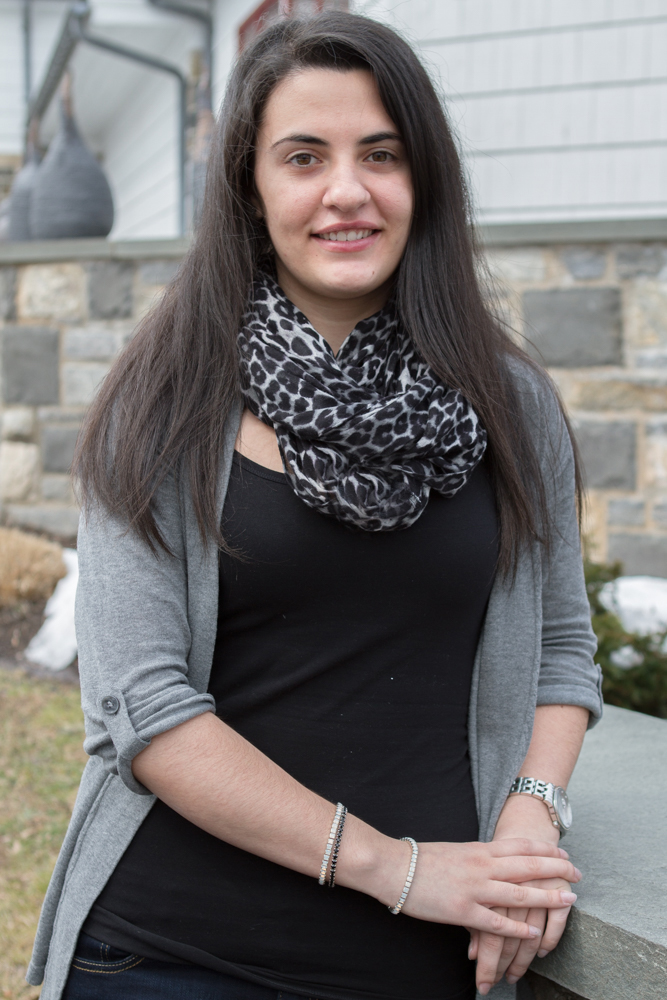 Silvia Salamone, who has a 4.0 G.P.A., is also graduating this spring with an Associate degree in Liberal Arts and Sciences. This year she was named as the first ever Queensborough Gold Scholar on Coca-Cola's 2015 Community College Academic Team as well as the 2015 Phi Theta Kappa (PTK) New York Team. In 2014 she was a senator for the Phi Theta Kappa Honor Society and was awarded a summer internship at the NYC Department of Environmental Protection (NYC-DEP). During the academic year she has been conducting nanochemistry research under Dr. David Sarno of the Chemistry Department and has presented her research findings at CUNY's Research Symposium and at West Connecticut State University. She has also tutored biology and chemistry students at the Queensborough Learning Center. She was offered three different NSF REU paid summer internships during the summer of 2015 and will be attending the University of Connecticut. Silvia Salamone, who has a 4.0 G.P.A., is also graduating this spring with an Associate degree in Liberal Arts and Sciences. This year she was named as the first ever Queensborough Gold Scholar on Coca-Cola's 2015 Community College Academic Team as well as the 2015 Phi Theta Kappa (PTK) New York Team. In 2014 she was a senator for the Phi Theta Kappa Honor Society and was awarded a summer internship at the NYC Department of Environmental Protection (NYC-DEP). During the academic year she has been conducting nanochemistry research under Dr. David Sarno of the Chemistry Department and has presented her research findings at CUNY's Research Symposium and at West Connecticut State University. She has also tutored biology and chemistry students at the Queensborough Learning Center. She was offered three different NSF REU paid summer internships during the summer of 2015 and will be attending the University of Connecticut.
"It is an extraordinary accomplishment that three of the 90 national scholars selected came from Queensborough," said Dr. Diane B. Call, President of Queensborough Community College. "I am thrilled knowing that Queensborough continues to be recognized for its leadership in providing a high quality education for all of our students."
Drs. Paris Svoronos of the Department of Chemistry and Emily Tai of the Department of History, who serve as co-advisors of Queensborough's Lambda Sigma Chapter of Phi Theta Kappa, the International Honor Society for two-year College students that solicit nominees for the Jack Kent Cooke Undergraduate Transfer Scholarship were key players in the students' successes.
"Students must possess more than excellent grades to qualify for this distinguished award," said Dr. Paris Svoronos, Professor in the Chemistry Department. "They must also demonstrate their persistence and dedication to being outstanding researchers, leaders and mentors. This can be evidenced by their commitment to undertake challenges such as a research project where failure serves in strengthening the individual's character."
"Ms. Proano, Ms. Salamone, and Mr. Chin-How all embody the best ideals of Phi Theta Kappa: leadership, fellowship, service, and academic excellence. Mr. Chin-How has distinguished himself as a leader in Queensborough's Student Government and has an outstanding, thoughtful intellect; Ms. Proano and Ms. Salamone are both talented and promising young scientists, who have also contributed critically as officers of Queensborough's Lambda Sigma chapter. It is so wonderful to see each of them honored with the award of this important scholarship from the Jack Kent Cooke Foundation!" Dr. Emily S. Tai, Associate Professor of History.
Ranked in the top 100 community colleges among approximately 1,200 community colleges nationwide by Community College Week, the College is committed to open-admission access for all learners and to academic excellence. Queensborough is one of the most diverse campuses nationwide, with students coming from 143 different countries, speaking 84 different languages. The ethnicity of the student body is almost evenly split among African Americans, Asians, Caucasians and Latinos. Queensborough is a critical gateway into higher education for many students who are the first in their families to attend college.
Queensborough Community College, a college of The City University of New York, is located on a lush 37-acre campus in Bayside, Queens, New York. The College was established in 1959 on the former site of the historic Oakland Golf Club and offers a rich liberal arts and science curriculum as well as career and pre-professional courses. The College's transfer programs are designed for students who plan to continue their studies at a four-year institution. Career programs provide the academic foundation and training for students who plan to begin or advance a promising career. Queensborough offers the Associate in Arts (A.A.), the Associate in Science (A.S.) and the Associate in Applied Science (A.A.S.) degrees, as well as non-credit Continuing Education programs. More than 16,000 credit and another 10,000 Continuing Education students are enrolled at Queensborough. Nearly 70 percent of graduates transfer to senior colleges or universities, and others obtain the necessary skills for career advancement.
The College has several Dual/Joint Degree programs with its sister CUNY institutions: Nursing with Hunter College, York College and CUNY School of Professional Studies; Biotechnology with York College; Criminal Justice, Forensic Accounting and Forensic Science with John Jay College of Criminal Justice; and Education with Queens College.
The College is also dedicated to providing cultural and artistic opportunities to students and the community through the Queensborough Performing Arts Center (QPAC), QCC Art Gallery and the Harriet and Kenneth Kupferberg Holocaust Resource Center and Archives.
By Dr. Allen Frances
Let's get this straight. I am a penny pincher, who hates waste and wants a lean and efficient government.
But, that said, we have to face the fact that our massive privatization of what once were government functions has been a failure. There are some public services that get really loused up when done privately and for profit.
This is a classic mismatch of wonderful theory and disastrous practice. The privatization theory is compelling. Government is inherently bloated, lazy,wasteful, dumb, and inefficient because it does not have to face the discipline of the marketplace. Put public services up for private bidding and you will get the lower costs and greater efficiency that comes with free market competition.
But privatization practice is often a disaster. An inefficient government monopoly is replaced by an even more inefficient private monopoly that is more expensive, wasteful, and lacking in accountability or responsibility for serving the public good.
The selection of private contractors is often rife with the corruption of political sweetheart deals. The profit motive consistently trumps public interest And shareholders and executives benefit at public expense, while public services deteriorate.
Let's do a quick review of the scorecard.
Mental Health: Deinstitionalization and the privatization of community mental health centers allowed the states to off-load responsibility for the severely mentally ill so that now about 300,000 are in prison and a like number are homeless.
Medical Health: Our chaotic, profit driven system delivers poor health outcomes even though it costs about twice as much per person as the more government regulated systems in the rest of the developed world. People who don't need it get too much medical care because it is profitable to providers, while one in seven people lack any coverage at all.
Defence: We pay outrageously padded bills to private military contractors who deliver poor services with constant cost over-runs and virtually no accountability. Today's general becomes tomorrow's Raytheon vice-president negotiating sweetheart contracts.
Water: Privatizing this precious commodity has made water more expensive and private equity funds rich.
Prisons: Privatizing helped make prisons one of America's big growth industries. Lobbying for unrealistically draconian drug laws has kept the lucrative contracts coming at enormous public expense and judicial inequity.
Courts: Chronic public underfunding has led to a kind of private entrepreneurship extorting large court fees that keep defendants in constant debt. You have to buy justice now in America.
Police: The frequent inappropriate police shootings are no accident- police are understaffed, underpaid, undertrained, and underscreened. A demoralized and dangerous police force is a disaster for poorer communities that depend on police protection, no problem at all for gated communities with a private security force.
Schools: Charter schools, once a great hope to shake up our moribund educational bureaucracy, have so far failed to live up to their promise and seem destined to benefit shareholders more than kids.
The consistent failures of privatization are not self correcting. Privatization has a powerful political and economic momentum that defies logic and insulates it from public scrutiny and reform. All the leading Republican candidates for president promise more of the same- the tea party radicals would even close down the IRS, the EPA, the Education Department, and more. And countries all over Europe are following our bad example replacing their efficiently run public services with much less cost-effective private ones.
What propels privatization, despite its failures? You guessed it- money doesn't just talk, it shouts. The profit motive can be very motivating.
Enormous campaign contributions from big corporations and the super-rich (expressing their Supreme Court protected, Citizen's United, right to free speech) promote the friendly politicians who support giveaway privatization. And there is a revolving door between government jobs and industry lobbying jobs that ensures sweetheart statutes and regulations that benefit the private contractors and harm the public interest.
And behind it all the greedy folks with the really big bucks who are selfishly eager to reduce tax-supported public services because they don't need or use them.
Capitalism and private corporations were invented in the the western world four hundred years ago as a response to flourishing trade opportunities. We have since accumulated a vast experience on its pluses and minuses and on the best balanced relationship between public and private delivery of services.
Adam Smith was the father of the free market. He pointed out its irreplaceable value in providing rational pricing and an efficient allocation of goods, services, and resources.
But Adam Smith also supported the role of government in providing services that the free market could not: national defense, post office, police, firefighting, public works, health, education, justice, transportation, banking, controlling monopolies, enforcing contracts, and caring for the poor and infirm.
As Adam Smith predicted, unbalanced systems don't work. Top down, government directed economies result in rampant corruption and misallocation of resources. Free-for-all free market economies also result rampant corruption and misallocation of resources.
We have gone too far down the road of privatization and need to return to the kind of balanced economy that Adam Smith advocated. The multinational corporations and the super rich have used their vast political and economic power to evade paying their fair share in taxes. The eroded tax base cannot adequately support the public services that the public needs. Privatization is no more than a cover story for tax evasion by those who don't need public services and would greedily deny them to those who do.
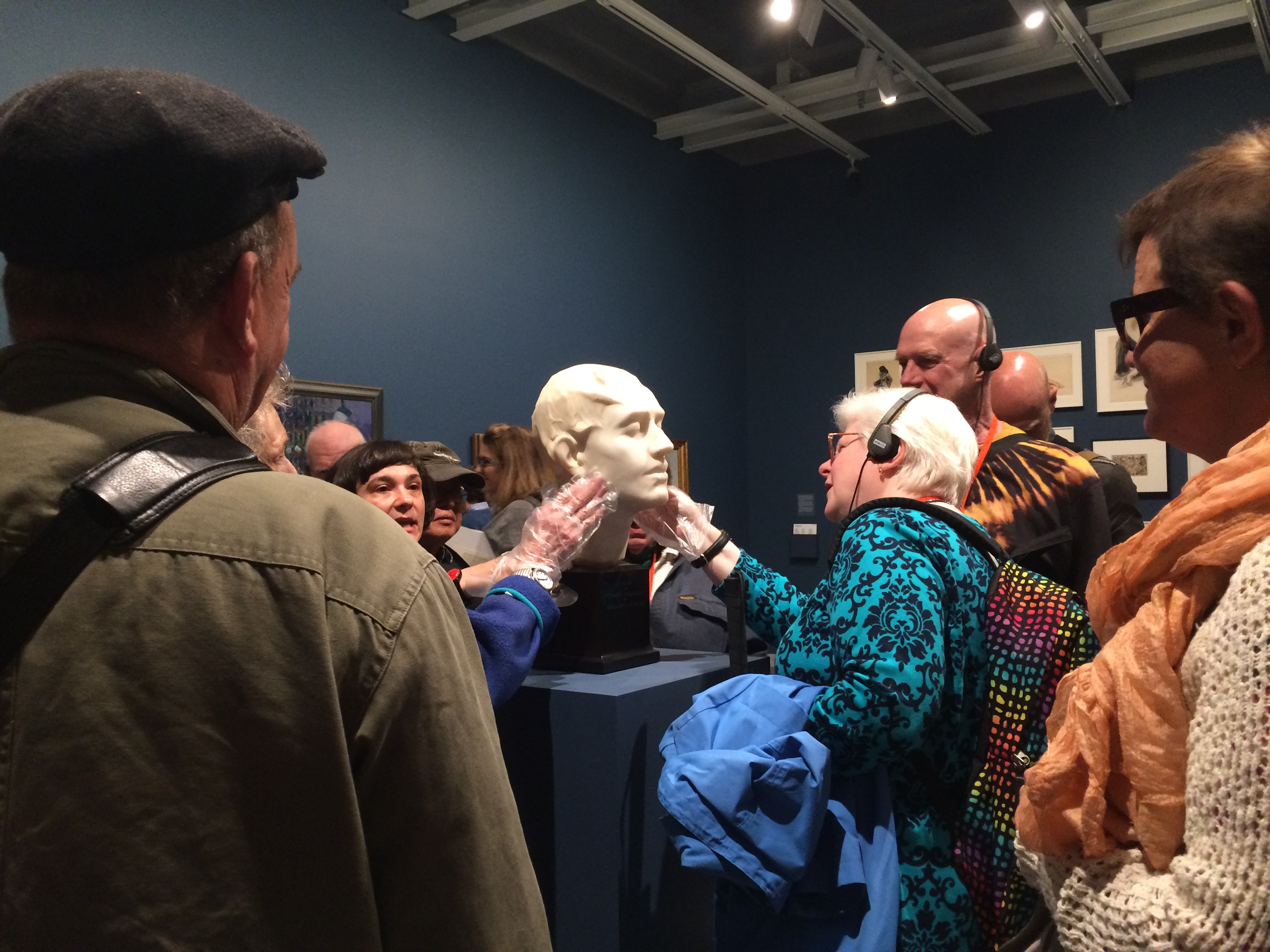
Those with visual impairments experience the "Head for Titanic Memorial" by Gertrude Vanderbilt Whitney, 1922 on the Verbal Description and Touch Tour at the new Whitney Museum.

Daniel Linzer leads a discussion of the iconic "Phil" by Chuck Close, 1969.
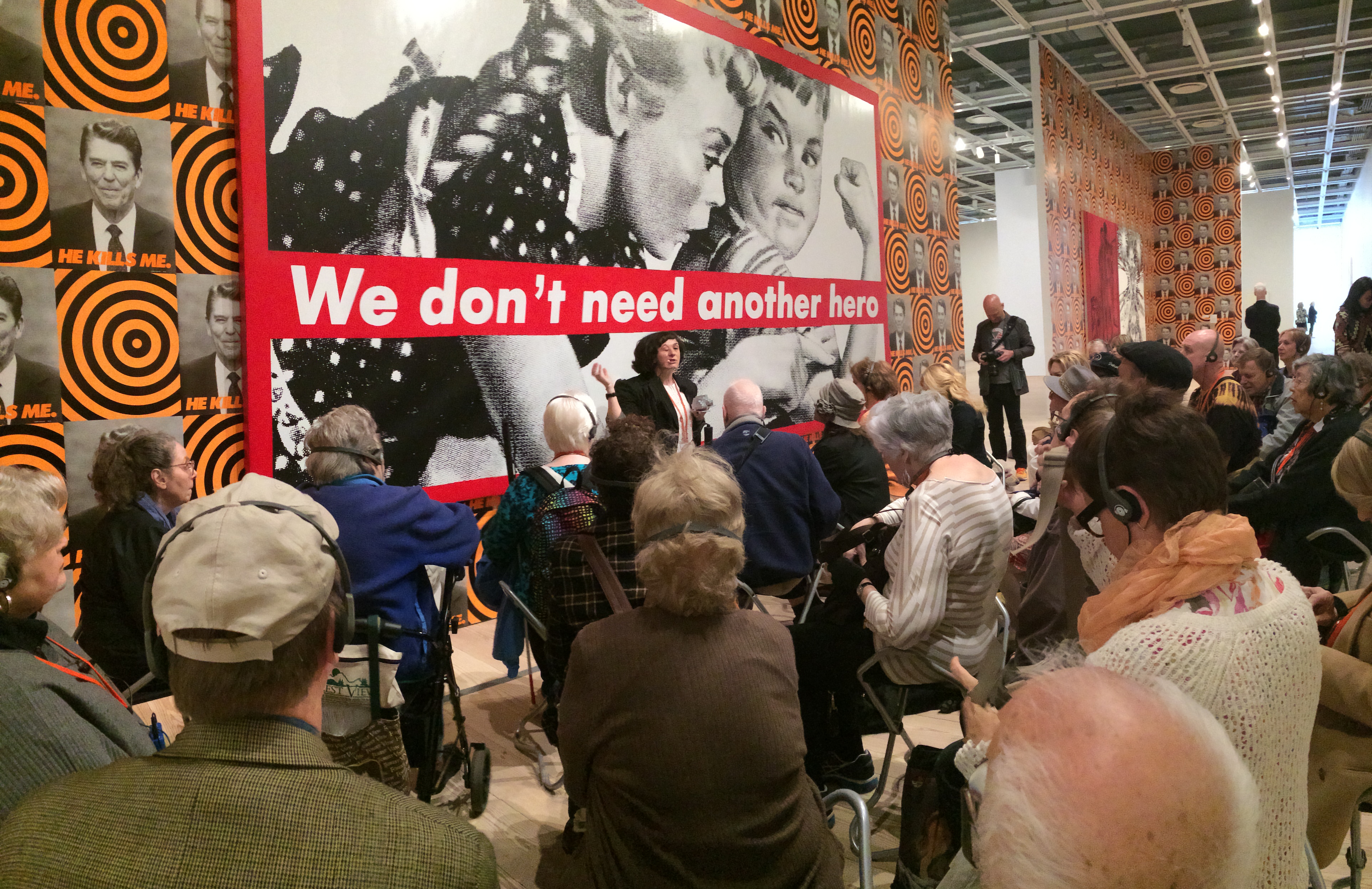
Daniel Linzer and participants discuss "Untitled (We Don't Need Another Hero)" by Barbara Kruger, 1989.

Teachers College Commencement at St. John the Divine. in the processional are (L-R) Advisory Council Members Marion Boultbee, Kathleen Morin, Chair Patrick McGuire and Dr. Pola Rosen

Matilda Cuomo, NYS Health Commissioner Dr. Howard Zucker, Dr. Margaret Cuomo, a diagnostic radiologist and speaker at NYS Cancer Prevention Summit, Howard Maier.
Barnard Commencement 2015 with mentor Dr. Pola Rosen, Class of 1963 and mentee and graduate Julia Qian, Class of 2015.
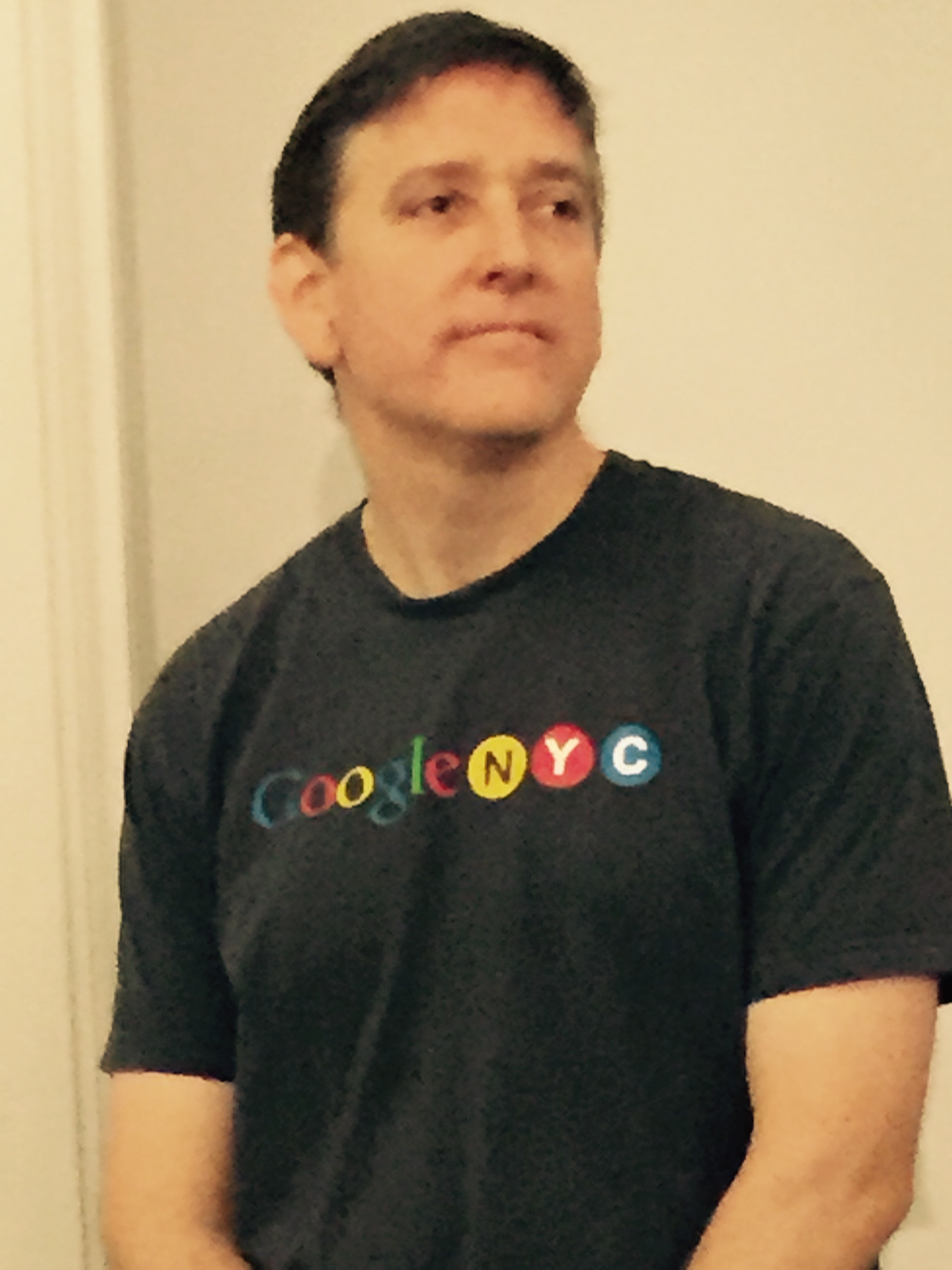
CIO of Google, Ben Fried, addresses children at the American Museum of Natural History.
Children from a Bronx public school are entranced by the exhibits.
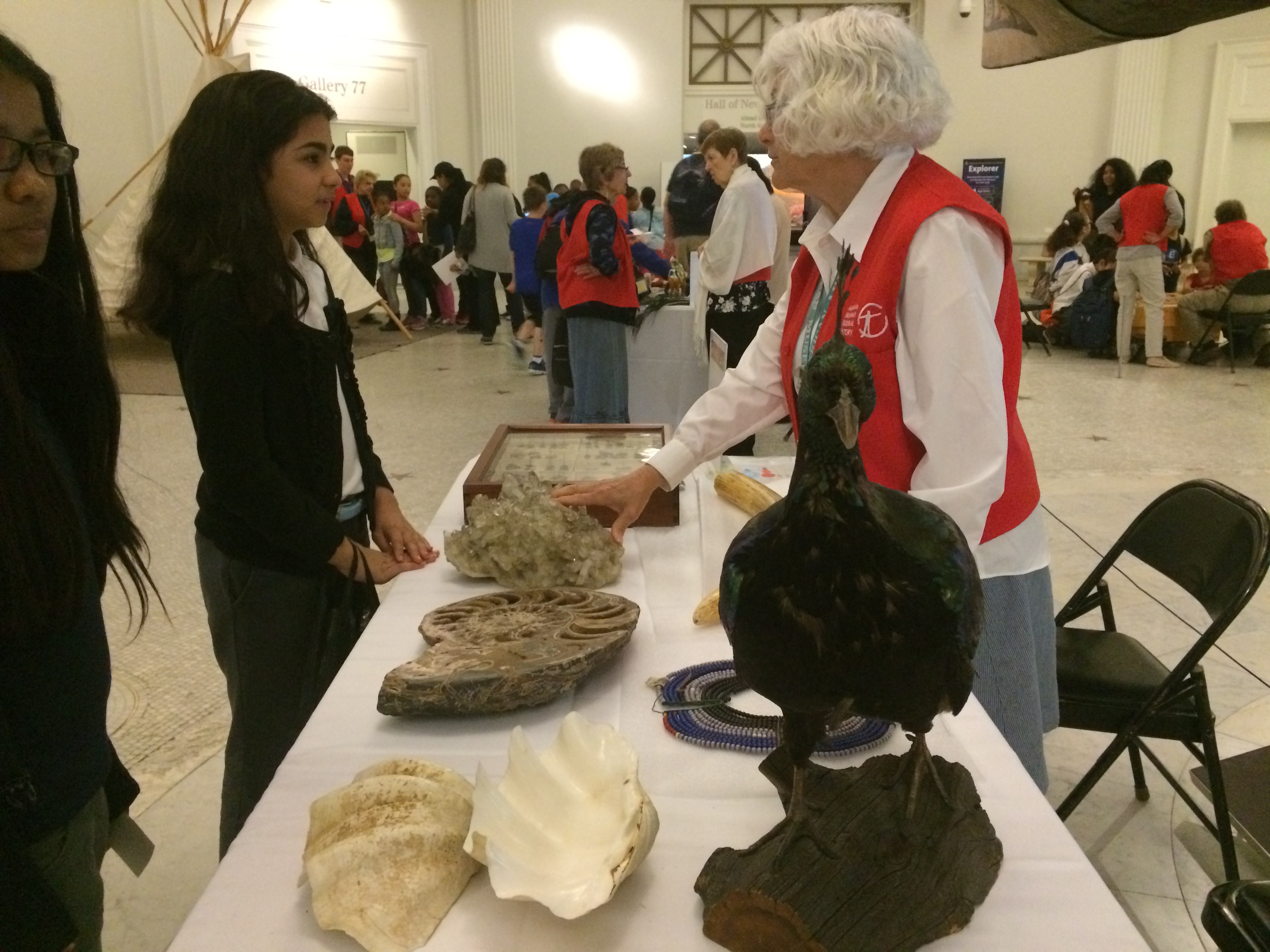
Students learn from interactive displays.
By Caroline Miller
With more and more testing in our schools, and more and more pressure on children to ace them, test anxiety is becoming an issue for a lot of kids. "When kids are having test anxiety they can't think clearly, they can't judge things the way they could if they weren't anxious," explains neuropsychologist Ken Schuster. "All of your other abilities get clouded up by anxiety."
This week on childmind.org we explore strategies experts use to help kids overcome test anxiety, from study strategies that build confidence to techniques to keep from getting rattled. We discuss reasons why some kids are prone to anxiety. The common denominator: If you think you aren't going to do well, you're going to feel more anxious.
Last night the Child Mind Institute launched our 2015 Speak Up for Kids campaign with the first Change Maker Awards, honoring five great people and organizations changing the way we think about and treat kids with mental illness. As the host for the evening, actress and comedian Ali Wentworth put it: "Raising our voices lets struggling young people know that it's okay to ask for help and that help exists." You can read here about the honorees.
We also released our first interactive Children's Mental Health Report, highlighting how many kids have mental illness, the gap between prevalence and care, and the cost to kids, families, and the community. You can see it here.
Caroline Miller is the Editorial Director of the Child Mind Institute
Dear Friend,
We kick off Speak up for Kids, our annual public education campaign, with two new initiatives. We released the first Child Mind Institute Children's Mental Health Report this morning, and tonight we present the first Child Mind Institute Change Maker Awards.
In the Children's Mental Health Report we've gathered the best information about the scope of children's mental illness in America. The findings are staggering. More than 17 million kids have a psychiatric disorder and only 35 percent of them get help. We hope this high-impact, interactive presentation of the data will help start a vital conversation among health care providers, families, and lawmakers.
The Change Maker Awards honor people and organizations that are actively changing things for the better and improving the lives of our kids. From the First Lady of New York to a campus advocacy group, we're all working towards similar goals and helping kids who struggle with mental illness.
I hope that you'll help spread the word about the Report and the Awards among your friends and colleagues And please join me once again this May as we Speak Up for Kids, work to transform our nations understanding of childhood mental illness, and celebrate the people who are making the change.
With warmest regards,
Harold S. Koplewicz, MD
President, Child Mind Institute
Dwight School's campus was bustling with activity recently, when the school hosted the first-ever Edcamp dedicated to the International Baccalaureate. Bringing teachers together to talk about what matters most to them ― teaching ― the event drew nearly 100 participants.
Edcamp is a form of unconference. Unlike traditional conferences, which have pre-set speakers, Edcamp unconferences are driven by attendees, who create the agenda at the start of the event, and anyone can be a presenter. They're free and built on principles of participatory learning. With no formal planning aside from logistics, several Dwight faculty members, alongside attendees from other IB schools, led lively discussions about teaching and learning across the full IB continuum.
Sessions ranged from practical classroom application ("Scaffolding through Thinking Maps," "Interactive Fictions across Disciples," and "Diploma Program Film ― Why?"); and the theoretical ("Chinese Identity through Culture" and "Creative Ways of Using Technology in the Primary Years Program"); to the administrative ("IB Administrators Discussion" and "Assessment in the IB"). In addition, there were hands-on sessions about 3D printing.
"Participants were excited and eager to share in a format that put them in charge of their own learning. Being able to suggest session topics and freely move among sessions are the hallmarks of any Edcamp event," reports Basil Kolani, Head of Technology and Innovation at Dwight, and one of the lead organizers of Edcamp IB. "I'm pleased that hosting the event at Dwight provided other educators with a peek into all the exciting and great things happening every day on our campus, while giving our faculty a chance to learn alongside other IB teachers dedicated to improving their craft."
Dianne Drew, Head of School, was delighted that Dwight hosted the first Edcamp IB and that so many teachers from grades 1-12 were drawn to see how new methodologies, technology, up-skilling, inquiry, and collaboration can be utilized to motivate students in the classroom setting. She reports, "Edcamp IB was a great day to share IB practice and curriculum innovation with IB practitioners and other educators, who have heard so much positive discussion about this thriving, global curriculum. The event was both a great showcase for the outstanding work and IB expertise of Dwight faculty and an opportunity for Dwight faculty to learn together with others in the spirit of the IB Learner Profile, exemplifying what it means to be knowledgeable, open-minded, caring, reflective, principled, balanced, thinkers, inquirers, communicators, and risk-takers."
As the first school in the Americas to offer all four IB programs (the Primary Years Program, Middle Years Program, Diploma Program, and Career-related Program), Dwight was pleased to welcome Paul Campbell, Head of Regional Development for IB of the Americas, to Edcamp IB. Ms. Drew shares, "Dwight's foray into the Edcamp model is just another example of our School's dedication to innovation and the desire to collaborate with like-minded educators in order to spark the passion of learning for both students and teachers alike."
Dwight School is a founding International Baccalaureate Prek-12 school in the United States and the first to offer the comprehensive IB curriculum in the Americas.
Educational leaders, Mark Claypool and John McLaughlin, recently authored a book titled We're in this Together: Public-Private Partnerships in Special and At-Risk Education. The book scheduled to be released in June 2015, explores the benefits of public schools partnering with private education companies, and how the two entities can work together to better educate at-risk and special needs students. The book is meant to dispel the many myths and other negative stigma associated with public-private partnerships, and it points to many successful examples of public-private partnerships in use by states today.
Mark Claypool conversed with Education Update about the concept for the book and why thebook will educate parents, schools, and teachers about special needs students.
Education Update (EU): How were you able to meld education and business to help studentswith special needs?
Mark Claypool (MC): I wanted this to be a book for the private sector, as well those responsible for designing our public educational system. The idea of putting business and education together is at the very core of the position we take, and we use the book to present solid research and results around our argument in favor of public education and private business working hand-in-hand to invest in our youth.
EU: How do you think this book will help parents, schools, and others who are advocates for education when there's so much going on with schools? How would this book be an excellent resource for anyone in the education field?
MC: To me, the greatest value of the book is that it helps to create a dialogue around the idea that business and education do not need to be opposed to each other. The partnership between the two is much more powerful than each on its own. No matter how big your role in the public school district, there's no way you can do it by yourself. In our opinion, you should see yourself as a journalist with a "beat" or a primary care physician who consults a specialist. If I go to my general practitioner and I say my knee hurts, he's probably going to refer me to a specialist. The reaction that public schools sometimes have is "I should do this by myself because I'm your doctor and I should be taking care all of your problems." It's not a sustainable way for public district schools to operate. We're hoping that this book will promote a dialogue where superintendents, school board members, teachers, and principals will be much more comfortable asking help from specialists like Educational Services of America (ESA) and other businesses.
EU: How do you plan to promote the book to schools and students with special needs? Are you catering to states and countries that are mostly populated with students with special needs?
MC: We will be attending superintendent conferences, teachers' conferences and will be speaking to healthcare organizations because we know that both healthcare and education are important to special needs students. We're really trying to bring people together since our society is generally very isolated around this issue. Healthcare, police officers, and teachers are working with the same child but they are not working together. So again, it's all about bringing people together. We need to have a common language about bringing life into these kids and that's how we will promote it.
EU: Tell us more about your educational company, ESA (Educational Services of America).
MC: I was a social worker, but became disillusioned with the job when I observed how many kids were being moved around to different homes and different schools and not getting an appropriate education. It was an unhealthy environment for both the kids and parents. We started the company in 1999 with a focus on kids that typically tend to get "left-behind," like special needs, foster and at-risk youth. ESA believes that all children have the right to an education and should remain hopeful because their future can be better than their past. But in order for them to do that, they will have to modify their behaviors and learn to be productive members of society, and that is where we can help. We have students with autism, learning disabilities and mental health issues, and we have a lot of students who are in terrible situations because of their home-lives or upbringing. It's just too hard for them to get out and attend atraditional school, preventing them from graduating and then moving on into the workforce. Weprovide a big safety net of achievement for all of these kids so they can have a nurturing place to focus and meet their potential. ESA will help them move on to the next stage of their lives and contribute to society. We know we are making impact because of the numbers of students we work with who are graduating with a high school degree and going on to lead successful lives.
EU: What are you planning to achieve as an author and educational leader once the book is officially launched in June?
MC: My goal always is to serve more children every day, and that's how we start our day around here. We try to figure out how to reach out to more kids, more schools and more educational programs. At the end of the day, I hope by exposing our story and the issues that exist we can break down some barriers and reach more kids and families. There is a great need for this approach in the U.S. and in the rest of the world. You just can't wait around for years and expect that when at-risk students are in the 11th or 12th grade they will suddenly learn how to learn. Our education system should have the biggest possible toolbox to serve the needs of all kinds of students.
|
|
|
 Honors student Kyle Chin-How will graduate this spring with an Associate degree in Liberal Arts and Sciences. He is a member of the Lambda Sigma Chapter of the Phi Theta Kappa International Honor Society and carries a 3.8 G.P.A. In addition to being an outstanding student, Kyle is a leader and mentor both on and off campus. He is a Model Senator in the NYS Session Senate Project, has held leadership positions in the College's Student Government Association and is an intern with the New York Public Interest Research Group (NYPIRG). At the college Kyle established "Talk Out Loud," a student public speaking group. He is also a mentor to students of Men Achieving and Leading in Excellence and Success (M.A.L.E.S.).
Honors student Kyle Chin-How will graduate this spring with an Associate degree in Liberal Arts and Sciences. He is a member of the Lambda Sigma Chapter of the Phi Theta Kappa International Honor Society and carries a 3.8 G.P.A. In addition to being an outstanding student, Kyle is a leader and mentor both on and off campus. He is a Model Senator in the NYS Session Senate Project, has held leadership positions in the College's Student Government Association and is an intern with the New York Public Interest Research Group (NYPIRG). At the college Kyle established "Talk Out Loud," a student public speaking group. He is also a mentor to students of Men Achieving and Leading in Excellence and Success (M.A.L.E.S.).
 Silvia Salamone, who has a 4.0 G.P.A., is also graduating this spring with an Associate degree in Liberal Arts and Sciences. This year she was named as the first ever Queensborough Gold Scholar on Coca-Cola's 2015 Community College Academic Team as well as the 2015 Phi Theta Kappa (PTK) New York Team. In 2014 she was a senator for the Phi Theta Kappa Honor Society and was awarded a summer internship at the NYC Department of Environmental Protection (NYC-DEP). During the academic year she has been conducting nanochemistry research under Dr. David Sarno of the Chemistry Department and has presented her research findings at CUNY's Research Symposium and at West Connecticut State University. She has also tutored biology and chemistry students at the Queensborough Learning Center. She was offered three different NSF REU paid summer internships during the summer of 2015 and will be attending the University of Connecticut.
Silvia Salamone, who has a 4.0 G.P.A., is also graduating this spring with an Associate degree in Liberal Arts and Sciences. This year she was named as the first ever Queensborough Gold Scholar on Coca-Cola's 2015 Community College Academic Team as well as the 2015 Phi Theta Kappa (PTK) New York Team. In 2014 she was a senator for the Phi Theta Kappa Honor Society and was awarded a summer internship at the NYC Department of Environmental Protection (NYC-DEP). During the academic year she has been conducting nanochemistry research under Dr. David Sarno of the Chemistry Department and has presented her research findings at CUNY's Research Symposium and at West Connecticut State University. She has also tutored biology and chemistry students at the Queensborough Learning Center. She was offered three different NSF REU paid summer internships during the summer of 2015 and will be attending the University of Connecticut.


